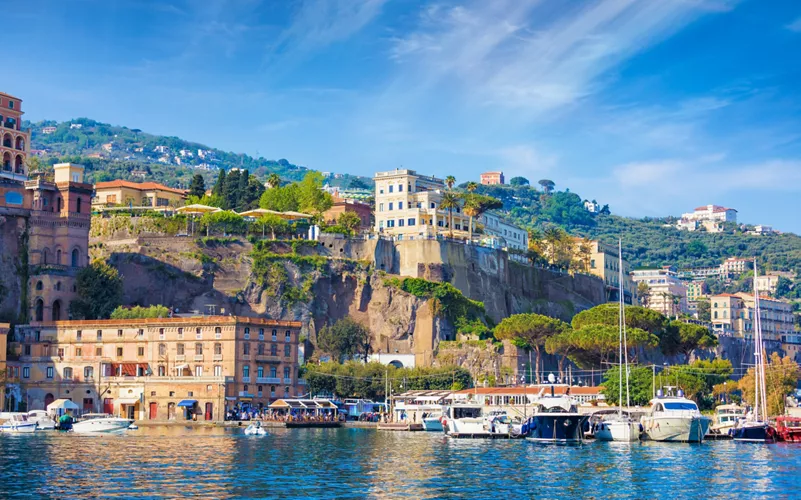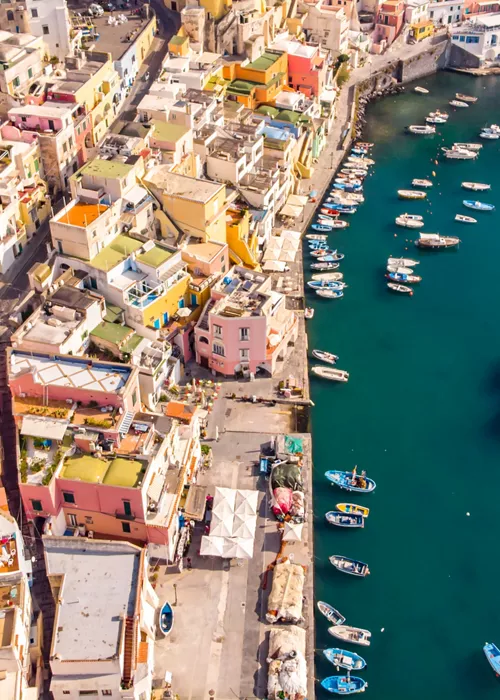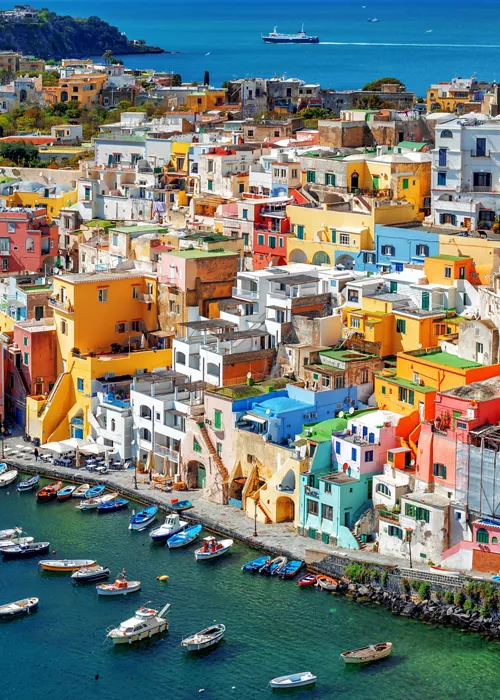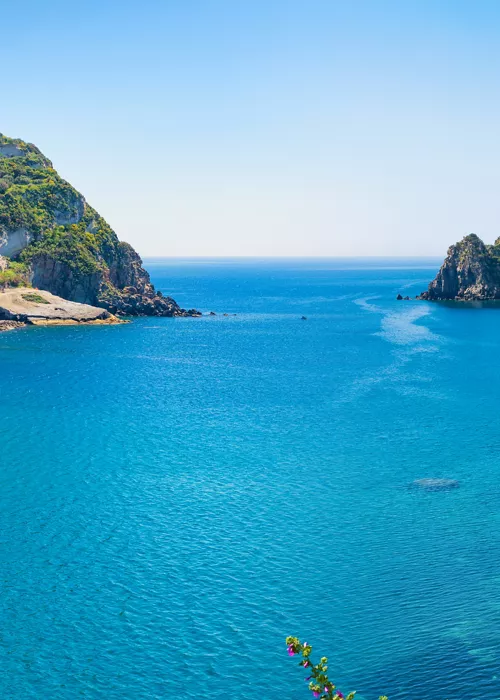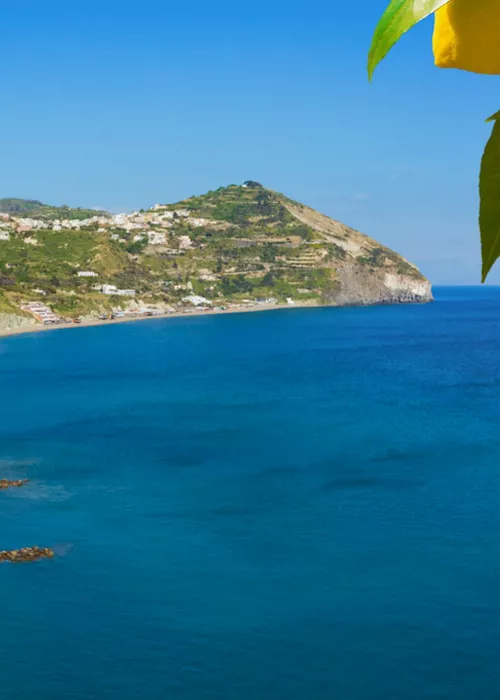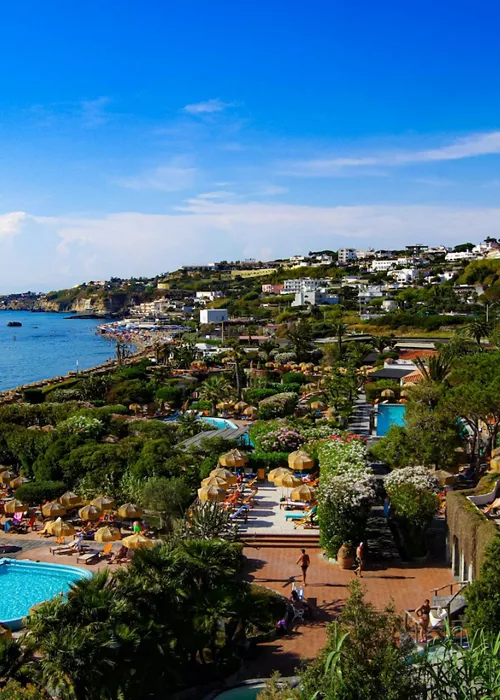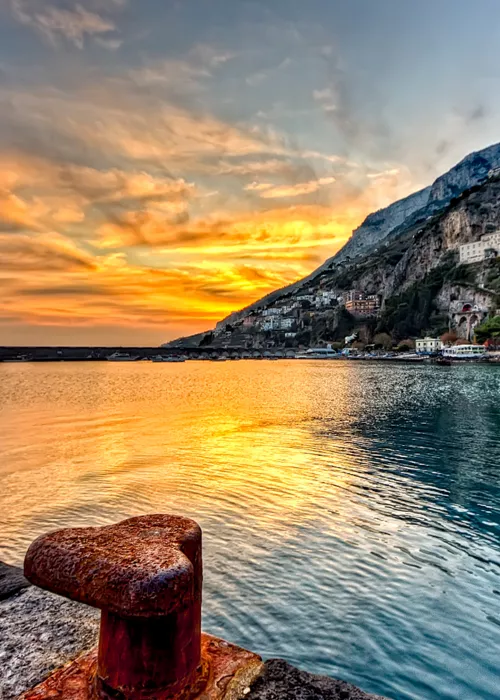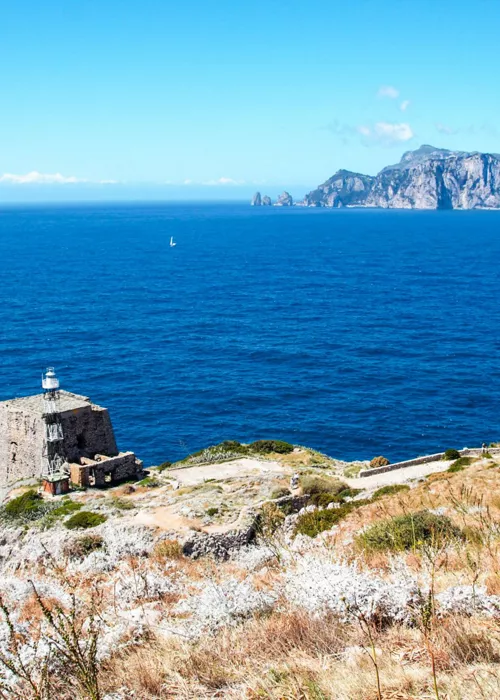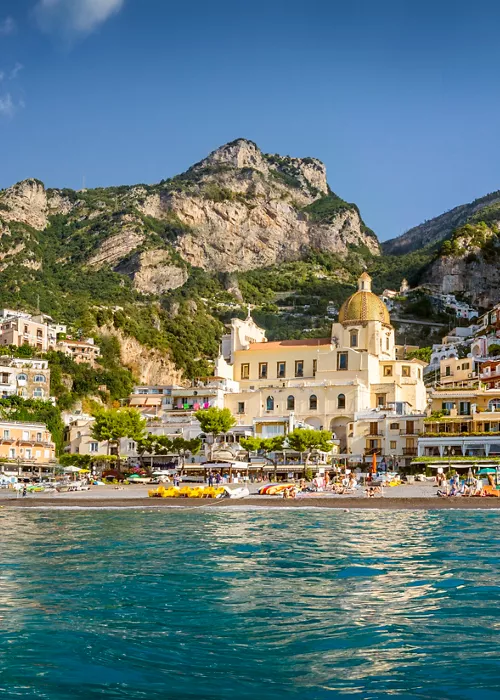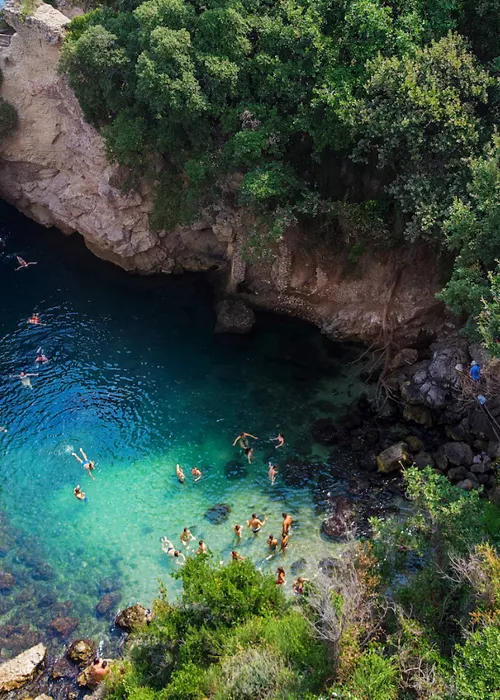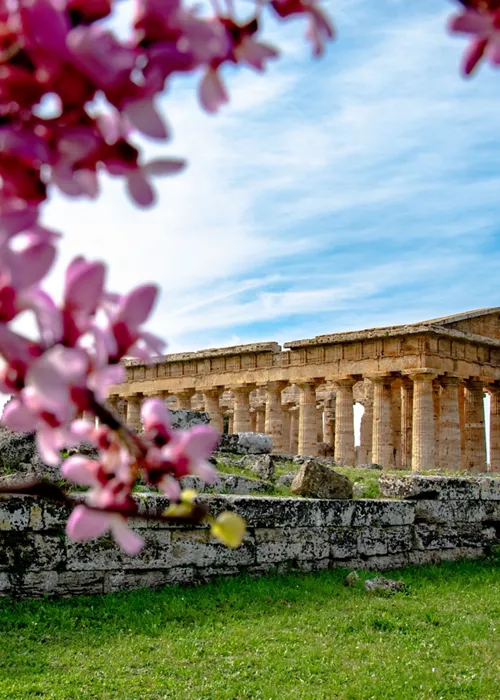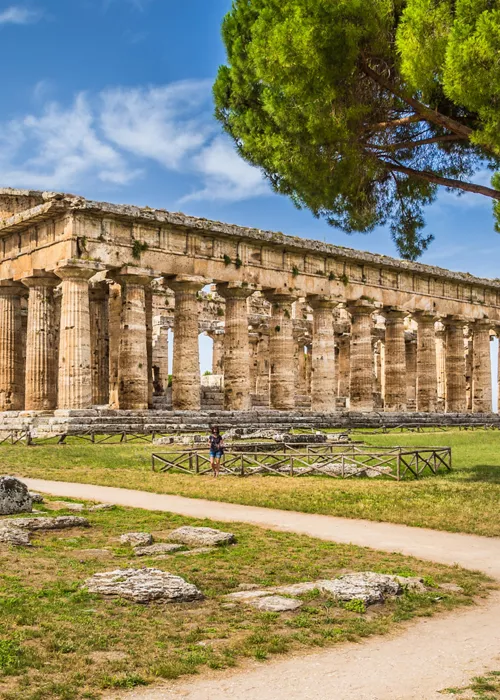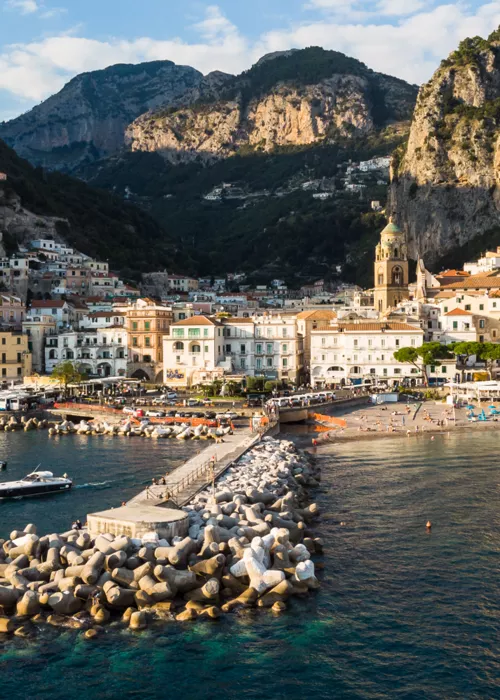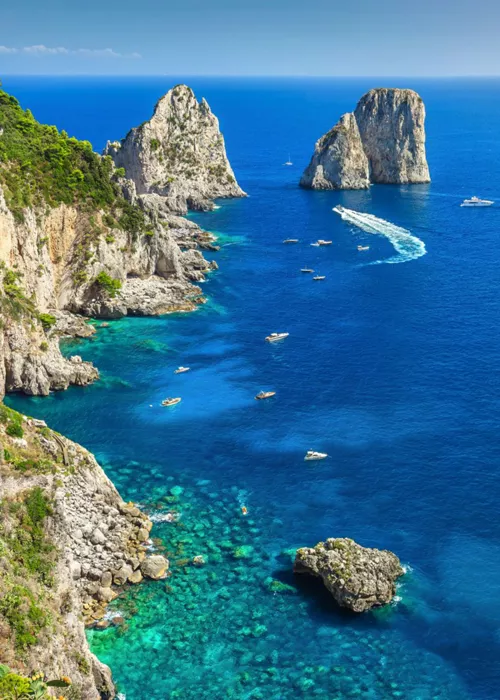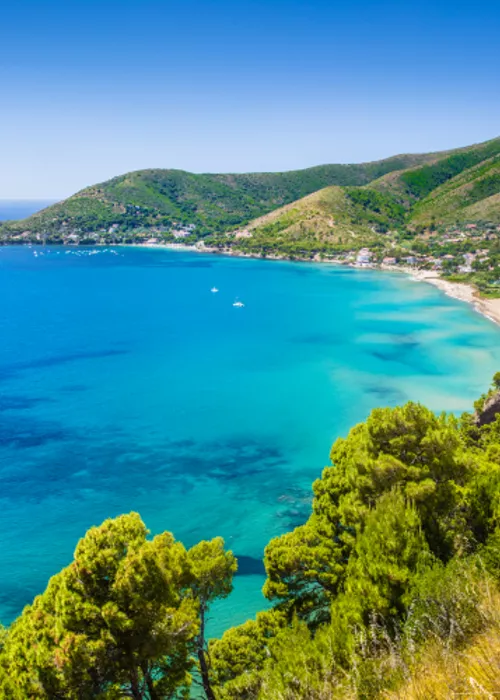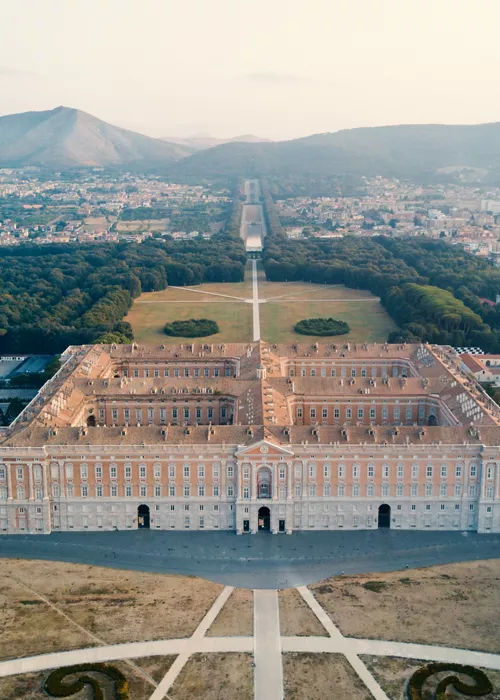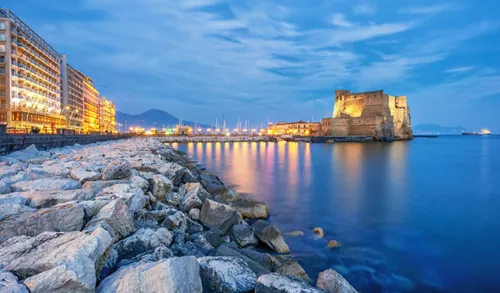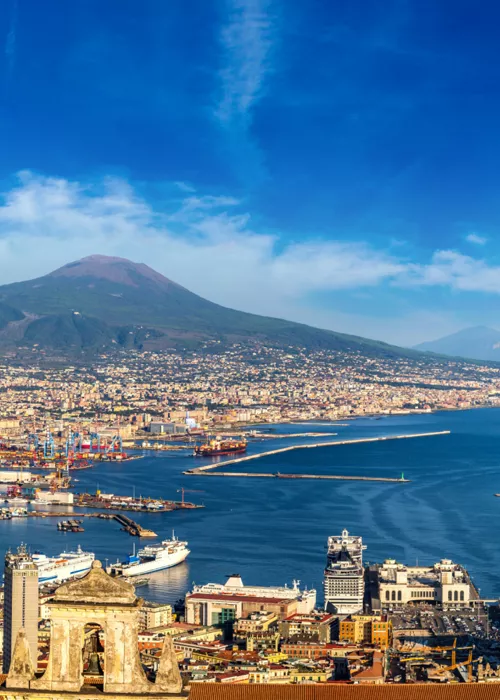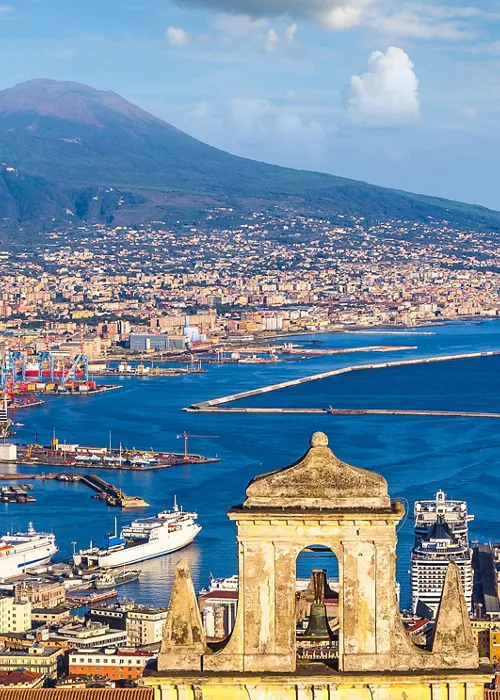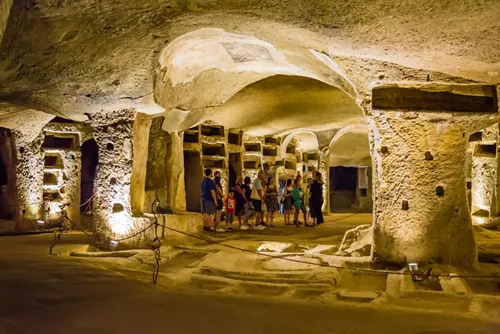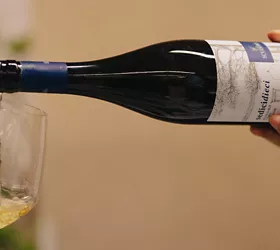Sorrento: jewel of the Gulf of Naples
Perched on a high cliff overlooking the sea, at the centre of its peninsula, Sorrento embraces the Gulf of Naples, Vesuvius and has Ischia and Procida on the horizon.
All around, the green gardens of the villas and citrus groves; in the centre alleyways and squares full of historic buildings, including the house where the poet Torquato Tasso (1544-1595) was born, museums and workshops.
At its feet are the beaches of Marina Piccola and Marina Grande and the ports. There are about a hundred hotels and some can boast 200 years of history.
10 things to see in Sorrento
Torna a Surriento, one of the great classics of Neapolitan song, is a hymn to the beauty of the Sorrento sea and the scent of flowers "of the land of love". There is no more compelling invitation to visit this town and the Sorrento coast, and then extend, if you have time, to the well-known, neighbouring Amalfi coast.
You can easily get to Sorrento with the Circumvesuviana train from Naples: just a few steps from the station you’re on Corso Italia, the main street leading to Piazza Tasso, the city's living room, with a statue of the illustrious poet who only lived a few years in Sorrento.
The Santa Maria della Pietà alley, one of the most charming, should be explored. Some of the oldest buildings overlook it: Palazzo Veniero (13th century) in late Byzantine style; Palazzo Correale (14th century), in Catalan style; and Loggia di vico Galantariaro (15th century), from the Aragonese period.
If you walk along Viale Enrico Caruso, you can look out over the Vallone dei mulini, what remains of the wide valleys that surrounded Sorrento in ancient times and where the mills were located.
Not to be missed, in the centre of Sorrento, along Via San Cesareo, is the Sedil Dominova (from1500), theonly one remaining in Campania of the ancient sedili, the building where the nobility met, with its characteristic yellow and green tiled dome.
There are three churches to see in Sorrento: the Cathedral of Saints Philip and James, with important paintings by painters of the 18th-century Neapolitan school and the wooden choir with inlays by Sorrentine craftsmen; the church of Santa Maria delle Grazie, with a remarkable majolica floor; and the church of San Francesco, with its delightful cloister used for outdoor weddings.
The villa Comunale, where they often organise exhibitions, is beautiful, with a panoramic garden: from here you can take the lift down to the beach of Marina Piccola and the port.
Three museums of art, archaeology and handicrafts
There are at least three museums to visit in Sorrento: the Correale di Terranova museum, housed in an 18th-century villa surrounded by citrus trees with a terrace overlooking the sea, displaying more than 10,000 pieces of furniture, inlaid wood objects from Sorrento, majolica, clocks, Neapolitan crib statues and the library that holds original writings by the poet Torquato Tasso in 24 rooms.
The recently restored Georges Vallet archaeological museum is housed in the 19th-century villa Fondi de Sangro in a park open to the public overlooking the Marina di Cassano. Its collection of artefacts comes from excavation campaigns carried out on the Sorrento peninsula and documents everything from prehistoric to Roman times. There is also a model of the villa of Pollio Felice, the remains of which can be seen on the tip of the Capo di Sorrento and where the famous natural pool known as the Bagni della Regina Giovanna is located. On the ground floor is a marble statue of a female figure from a villa of the Imperial age found in Sorrento in 1971.
Exquisitely Sorrentine is the museum-workshop of wooden marquetryin the Pomarici Santomasi palace, which exhibits a collection of furniture made with the particular decorative cabinet-making technique that is still widespread in Sorrento.
When to go to Sorrento
The magnificent coastal climate makes it possible to visit Sorrento at any time of the year, but the days when the atmosphere is truly magical are those of Holy Week: during the Easter period, the orange blossoms are in bloom and in the city preparations are in full swing for the evocative religious processions, with processions of hooded men held on the evenings of Maundy Thursday and Good Friday, accompanied by torches and thuribles with incense.



